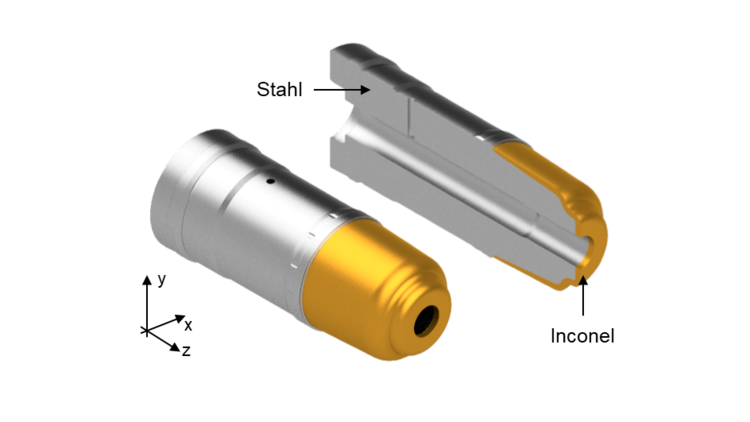Highly heat-resistant tool surface layers by extending the tailored forming technology to hot solid forming tools

| E-Mail: | massivumformung@ifum.uni-hannover.de |
| Year: | 2022 |
| Funding: | SFB 1153 – Transferprojekt T03 |
The goal is the economical production of tools with improved application properties in engraving areas subjected to high thermomechanical stress, which results in high potential for use in hot bulk metal forming. With conventional dies made of hot-working steel, the tempering effect in the surface layer areas, leads to a reduction in hardness and the formation of wear, which can ultimately be identified as the cause of failure. Inconel, on the other hand, shows high heat strength and tempering resistance, but has not yet been able to be used economically due to the high material costs and the difficulty of machining. Through forming operations, to be developed on hybrid pre-joined semi-finished products, the increase in surface area during forging should be used in order to introduce Inconel onto the base material made of hot-working steel as a protective wall in a reproducible and material-efficient manner. At the same time, a structural texturing adapted to the forming process should be introduced into both materials and the following tempering and diffusion treatment should be coordinated, which should lead to a higher resilience of the tool.
As part of the project, flat, thermally highly stressed hybrid tools will initially be produced, using tailored forming and used as contact plates of a hot shear tool in series tests by the project partner. From this, under simple geometric conditions, information can be obtained about the Inconel layer thickness to be applied, the degree of forming and the effect of using high-temperature nickel alloys. To do this, boundary conditions, processes and the referenced damage pattern of previously used stop plates are first examined. Subsequently, basic findings on the formation of the joint connection and its bond strength are determined. In addition, the analysis of the composite quality and the material properties of formed workpieces is carried out before and after a subsequent diffusion treatment. Hybrid stop plates are then manufactured on the basis of a numerical preliminary design and previous investigations on surface layer modifications. They will be tested for their wear resistance together with Hirschvogel Group. Based on this, the process for producing more complex stamp geometries is designed. The material distribution and the hardness gradient should be adapted to the thermomechanical loads determined from the numerical simulation in use. The following hybrid stamps are finally examined and evaluated in a tool life study at Hirschvogel Group with regard to their potential for reducing wear and the application of tailored forming technology for more complex hot solid forming tools.




















